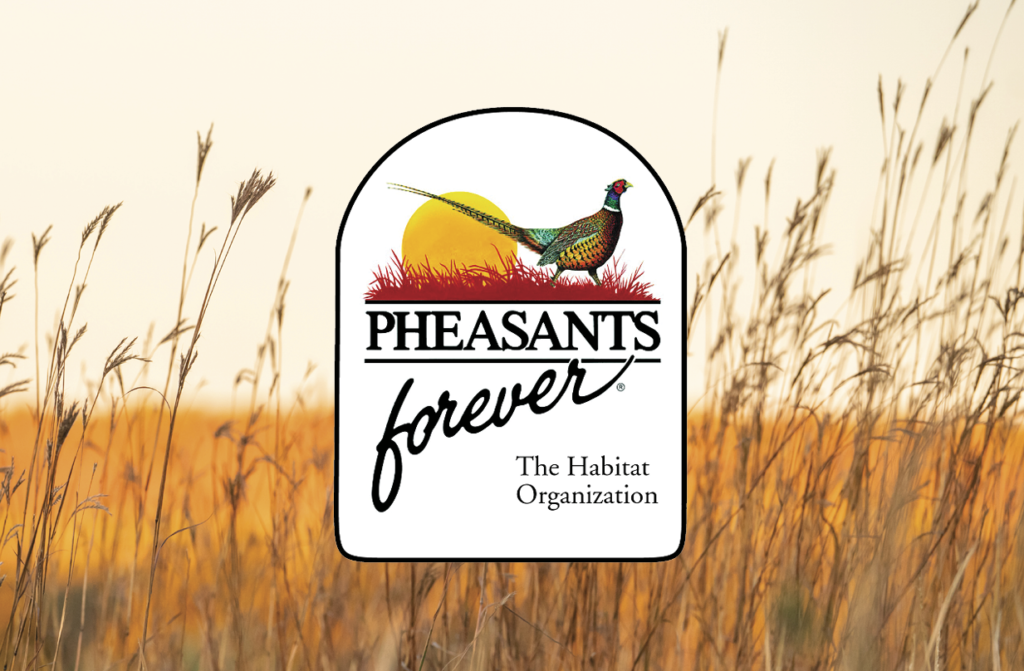FACTS SURROUNDING THE MAGIC OF NESTING SEASON

Created by Pheasants Forever Staff, photo by Karie Reishus, USFWS
Springtime throughout pheasant country brings with it one of the great disappearing acts of the world and the most critical period of the year for ringnecks – nesting season for hen pheasants. After all, our favorite birds have but a few short months to produce the next generation of fall quarry which bird dogs and their owners anticipate throughout the dog days of summer.
Second only to quail, pheasants exhibit one of the highest reproductive potentials in the uplands, thus enabling them to experience population explosions provided adequate nesting habitat and average weather conditions. To that point, nesting cover remains the most significant limiting factor for wildlife populations, which is why it should receive major attention for upland habitat projects. Here are some considerations for ideal nesting cover:
• Secure – Cover providing overhead and horizontal concealment from predators
• Undisturbed – Free from both human (mowing, dog training) and weather related (flooding) disturbances
• Diverse – Ideal nesting cover should contain several species of grasses and forbs at a minimum
• Dynamic – Planning ahead to manage for diverse nesting cover yields the best results
• Structure – Research has shown 20-acre to 40-acre grassland blocks to be the target size for maximizing nest densities
• Unconventional – Roadsides also provide habitat with up to five acres of potential nesting cover along each mile of rural Midwest roads
Courtship and Nesting
The nesting season begins with courtship as roosters scatter from winter cover to establish territories. Hens, attracted by the crowing and flapping of wings, locate roosters and begin nest building in quality grassland habitat. Once the nest is built and breeding has occurred, hens lay one egg each day until all eggs are deposited (the average number of eggs in a nest is 12, but the actual number is dependent on energy reserves). At this point, the hen will begin incubating and only leave the nest for a short while each day to feed. Twenty-three (23) days after incubation begins, the eggs will hatch. Some fun facts you might not know about nesting:
• Average Nest Initiation: Early May
• Average Incubation Start: Late May
• Length of Incubation: 23 days
• Average First Hatch: Mid-June
• Average Clutch Size: 12 eggs
• Average Nest Success: 40-60%
• Average Hen Success: 50-70%
• Average Rate of Chick Survival: 50%
• Major Nest Predators: Fox, raccoon, skunk, feral cats
• Re-nesting Attempts: Up to four in a single season
The winter season receives plenty of attention from upland hunters and biologists alike for its impacts on pheasant populations, but what you may not realize is that springtime and the following summer months can de detrimental to the health of hen pheasants. Egg laying and incubation is extremely taxing on the physiology of mother hens: up to 75% of their body fat and 10% of body weight can be lost in one month. At the end of incubation and brood-rearing, hens are very susceptible to disease, predation, and environmental factors.
Late Season Nesting Attempts
Hen pheasants are incredible creatures with an insatiable drive to raise a family. So much so, in fact, that 80% of the roosters harvested in the fall of 2020 will be produced between now and the end of August. Yes, the end of August. Although subsequent nesting attempts attributed to nest predation or abandonment produce fewer eggs, pheasants are very capable of hatching chicks into the waning months of summer. Additionally, chicks hatched late in the season have a lower chance at survival, so more successful early nesting attempts means more birds recruited into the fall population.
The upland season of 2019 was told through tailgate photos and the abundance of roosters who were missing their vibrant colors and unmistakable cackles due to a late hatch. Thankfully, the early start to our current nesting season bodes well for October if inclement weather and nest disturbances are minimized.
Did you know?
• As peak nesting activity occurs in the pheasant range, please keep in mind that the “nesting season ban” for public lands dog training is enacted in most states through mid-summer to protect nesting grassland birds and other wildlife. Contact your state wildlife agency to learn more.
• Pheasant chicks require three weeks after hatching before they can fly well enough to escape danger.
• Newly hatched chicks weigh two-thirds of an ounce and need to reach 11 days old before they can regulate their own body temperature. During this critical time, chicks are extremely susceptible to cold, rainy weather.
• Nearly 1/3 of all pheasant chicks will perish during their first summer – predators, extreme weather, and farm machinery represent the highest mortality factors.
• May is the peak month for egg laying while June represents the peak of the pheasant hatch.
• Hen pheasants are in their poorest physical condition in the month of August and could weigh 30% less than before egg laying was initiated. Death occurs when hens reach 40% loss of body weight.
Special thanks to Pheasants Forever biologists and South Dakota Game, Fish, and Parks for providing some of the factual content listed in this article.
SHARE ON
You may also like
The role corn plays for gamebirds and economies ac...
Sportsmen’s conservation policy issues from publ...
Sportsmen’s conservation policy issues from publ...


























